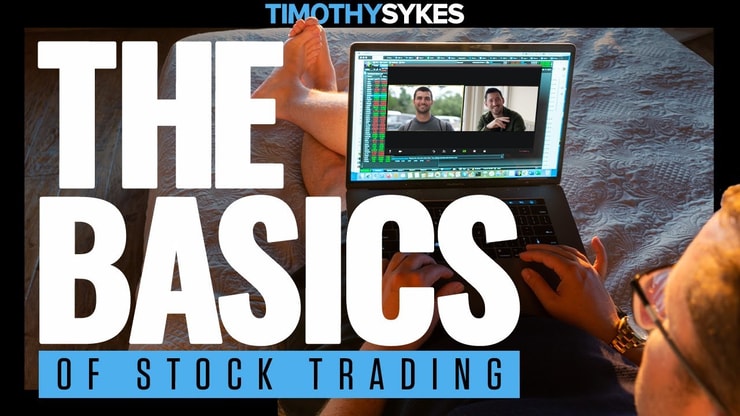Stock market indexes are vital elements in the world of finance, forming an intrinsic part of market analysis and investment strategies. They are essentially a barometer for the market, tracking the performance of selected stocks to provide a snapshot of market health.
What is a stock market index? Picture it as a basket. But instead of fruits or veggies, this basket carries a selection of shares from different companies. These shares aren’t chosen at random. Instead, they’re picked based on specific factors such as market capitalization, industry, and size. This assortment represents the market or a specific segment of it.
An index isn’t something investors buy like individual stocks. Instead, it’s a measurement tool, an analytical device that investors use to assess market trends and guide their trading decisions. A stock market index offers a simplified, accessible overview of the market’s movements, capturing complex data in a single figure.
Read on for investing strategies in this subset of blue chip holdings, grouped by country, economies, services, and other components. Let’s get to the content!
Table of Contents
What is a Stock Market Index?

In the financial world, a stock market index is a benchmark. It provides a standard against which the performance of individual stocks, index funds, and investment portfolios can be measured. Indexes help investors and analysts understand the market’s direction, providing insight into market trends and the overall economy.
Take the S&P 500 Index, for example. This index includes 500 of the largest companies listed on the United States’ stock exchanges. The share prices of these companies are used to calculate the index, giving a clear picture of how these blue-chip businesses are performing.
By tracking indices, investors can gain insights into the stock market’s performance without monitoring each individual stock. A stock market index condenses vast amounts of data into a single, easily digestible number, facilitating informed investing decisions.
How Does a Stock Market Index Work?
The operation of a stock market index relies heavily on its constituent companies’ stock prices. These prices, affected by factors like earnings reports, market news, and broader economic indicators, fluctuate throughout the trading day. As these prices change, so too does the value of the index.
Some indices are price-weighted, where each company impacts the index proportionally to its stock price. For instance, a company with a higher share price will have a greater influence on the index. Alternatively, some indices are cap-weighted (or market-cap-weighted), where larger companies with greater market capitalization have a bigger effect on the index’s value.
The stock market index works as a useful analytical tool, offering insights into market trends and helping investors make informed decisions. It reflects the collective performance of its constituents, providing a reliable snapshot of market health.
The Significance of Indexes
Indexes play a significant role in the world of finance. They represent a cross-section of the market, allowing investors to track market performance without having to monitor each stock. Investors can use indexes to benchmark the performance of their portfolios, comparing their returns to those of the market.
Moreover, indexes serve as the foundation for index funds and exchange-traded funds (ETFs), which are investment products that aim to mirror the performance of a specific index. By investing in these funds, investors get exposure to a variety of stocks, diversifying their portfolios and potentially reducing risk.
Indexes also provide vital information to analysts and economists studying market trends, sector performance, and economic health. A rising index might indicate market optimism and growth, while a falling index might signal investor caution and contraction.
Types of Stock Market Indexes

There’s a whole world of stock indexes out there that cover a wide range of purposes. Beyond benchmark and sectoral indexes, there are also international indexes tracking markets outside the U.S., like the Nikkei 225 in Japan or the FTSE 100 in the U.K. Additionally, there are indices based on investment styles, such as growth or value. ESG indexes, focusing on environmental, social, and governance factors, are becoming increasingly popular among socially-conscious investors. Understanding different types of indexes can help investors refine their strategies and choose suitable index funds or ETFs.
Benchmark Indexes
A benchmark index represents a broad cross-section of the market and serves as a standard for comparing investment performance. Some of the most renowned benchmark indexes include the S&P 500, the Dow Jones Industrial Average (DJIA), and the Nasdaq-100.
Investors use these indexes as a yardstick to measure their portfolio’s performance. For instance, if an investor’s portfolio returns outpace the S&P 500, they could argue they’re doing well since they’re outperforming a major market benchmark.
Sectoral Indexes
While benchmark indexes give a wide overview of the market, sectoral indexes zoom in on specific market sectors. These indexes track the performance of companies within a particular industry or sector, such as technology, health, or finance.
Investors often use sectoral indexes to gain exposure to certain industries or to hedge their portfolios. For example, if an investor believes the technology sector will outperform, they might invest in a tech-focused index fund.
What Are the Popular Stock Market Indexes?

While the S&P 500, the Dow, and the Nasdaq-100 are widely followed in the United States, many other noteworthy indexes deserve your attention. For instance, the MSCI World Index offers a glimpse of the global equity market, while the Russell 2000 shines a spotlight on small-cap companies.
On the ESG front, the MSCI KLD 400 Social Index is a popular choice for sustainable investing. Familiarity with a range of popular indexes can broaden an investor’s perspective and open new doors for diversification.
More Breaking News
- Will Dutch Bros Coffee Keep Surprising Investors with Expanding Horizons?
- Lyft Stock: A Bumpy Road to Recovery or a Strategic Bounce Back?
- SES: Riding the Tide of Market Fluctuations – What’s Next?
The Nasdaq 100
The Nasdaq-100 includes 100 of the largest domestic and international non-financial companies listed on the Nasdaq Stock Market. It’s heavily tilted towards technology companies, with big names like Apple and Microsoft forming part of this index. Its performance is often seen as a barometer for the technology and innovation sectors.
There’s also another Nasdaq index that includes both financial and non-financial companies — the Nasdaq Composite. It’s a broader index that offers a more comprehensive view of the market.
To learn more about this index and how it differs from the Nasdaq-100, read our article on the Nasdaq Composite.
The S&P 500 Index
The S&P 500 Index is a benchmark index in the United States. It comprises 500 of the largest companies listed on American stock exchanges. The index covers a wide range of industries, making it a popular tool for gauging the health of the U.S. economy.
By investing in an S&P 500 index fund, you can gain exposure to a wide range of industries and the largest companies in the U.S. This can be a great way to diversify your portfolio and align your investments with the overall market performance.
Learn more about investing in the S&P 500 here..
The Dow Jones Industrial Average
The DJIA, often referred to as “the Dow,” is one of the oldest and most watched indexes in the world. It tracks 30 large, publicly-traded companies based in the United States. Despite its smaller size, the Dow is often used as a proxy for overall market performance. Understanding the Dow and its constituents can provide valuable insights into the health of the U.S. economy and the performance of its largest companies.
For a deeper dive into this iconic index, check out our comprehensive guide on the Dow Jones Industrial Average.
The NYSE Composite Index
The NYSE Composite Index covers all common stocks listed on the New York Stock Exchange. It includes around 2,000 stocks, representing a wide variety of industries and sectors. The index provides a comprehensive measure of the market’s performance.
The Russell 2000 Index
The Russell 2000 Index tracks the smallest 2,000 companies in the Russell 3000 Index, making it a benchmark for small-cap stocks in the United States. It offers insight into the performance of smaller, often more volatile, companies.
The Wilshire 5000 Total Market Index
Known as the “total market” index, the Wilshire 5000 includes virtually every publicly-traded company in the United States. This makes it one of the most comprehensive indexes available.
Key Takeaways

Stock market indexes serve as benchmarks, gauging the health and performance of the market or specific segments. They provide investors with a handy tool to measure their investment performance and offer a foundation for various financial products like index funds and ETFs.
Each index works differently, depending on factors like its constituents and weighting method. Some represent a broad view of the market, while others focus on specific sectors. Understanding these nuances can help investors make informed decisions.
Trading isn’t rocket science. It’s a skill you build and work on like any other. Trading has changed my life, and I think this way of life should be open to more people…
I’ve built my Trading Challenge to pass on the things I had to learn for myself. It’s the kind of community that I wish I had when I was starting out.
We don’t accept everyone. If you’re up for the challenge — I want to hear from you.
Apply to the Trading Challenge here.
Trading is a battlefield. The more knowledge you have, the better prepared you’ll be.
What indices are you watching? Let me know in the comments — I love hearing from my readers!



Leave a reply